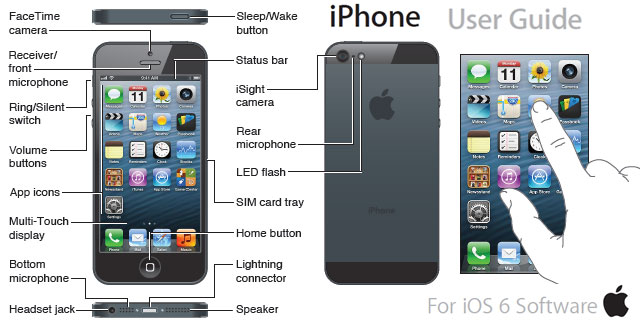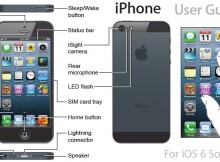iPhone 5 uses iOS, Apple’s mobile operating system. The user interface of iOS is based on the concept of direct manipulation, using multi-touch gestures. Interface control elements consist of sliders, switches, and buttons. Interaction with the OS includes gestures such as swipe, tap, pinch, and reverse pinch, all of which have specific definitions within the context of the iOS operating system and its multi-touch interface. Internal accelerometers are used by some applications to respond to shaking the device (one common result is the undo command) or rotating it vertically (one common result is switching from portrait to landscape mode).

The iPhone 5 uses iOS 6, which was released on September 19, 2012. Many of the iPhone 5’s features that work specifically with the included new iOS 6.0 operating system, will only work in certain territories on release. Apple has said this is a rolling program, which will take longer to implement across more regions.
The phone can act as a hotspot, sharing its internet connection over WiFi, Bluetooth, or USB, and also accesses the App Store, an online application distribution platform for iOS developed and maintained by Apple. The service allows users to browse and download applications from the iTunes Store that were developed with Xcode and the iOS SDK and were published through Apple.
The iPhone 5 can play music, movies, television shows, ebooks, audiobooks, and podcasts and can sort its media library by songs, artists, albums, videos, playlists, genres, composers, podcasts, audiobooks, and compilations. Options are always presented alphabetically, except in playlists, which retain their order from iTunes. Users can rotate their device horizontally to landscape mode to access Cover Flow. Like on iTunes, this feature shows the different album covers in a scroll-through photo library. Scrolling is achieved by swiping a finger across the screen. Alternatively, headset controls can be used to pause, play, skip, and repeat tracks. On the 5, the volume can be changed with the included Apple Earphones, and the Voice Control feature can be used to identify a track, play songs in a playlist or by a specific artist, or create a Genius playlist.
Like the iPhone 4S, the iPhone 5 has Siri, that allows the user to operate the iPhone by spoken commands. For example, “What is the weather going to be like?” will generate a spoken response like “The weather is to be cloudy and rainy and drop to 54 degrees today”. For usability reasons, third-party applications cannot currently respond to voice commands. The commands given do not have to be formulated using rigidly determined wording; natural language can be used. Siri is accessed by holding down the home button rather than tapping it. The software was improved in iOS 6 to include the ability to make restaurant reservations, launch apps, dictate Facebook or Twitter updates, retrieve movie reviews and detailed sports statistics.
